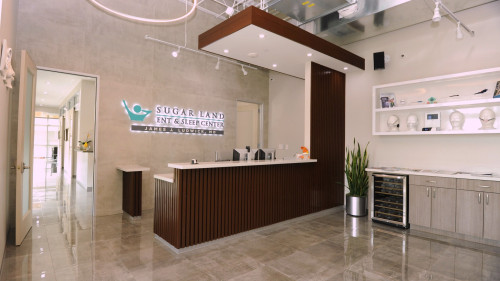While Dr. Ludwick sub-specializes in Allergy, Sinus, and Obstructive Sleep Apnea, he is still a general Otolaryngologist with over 20 years of experience treating patients with a wide variety of conditions affecting the head and neck region, including children and adults.
Out of our five senses (hearing, smell, sight, taste, touch), Otolaryngologists are the medical experts of FOUR of them! It is truly incredible the number of conditions that affect the head and neck region which is why it is important to seek care from a well-trained and experienced Otolaryngologist when you have a problem affecting your head or neck region.
The “E” in ENT stands for “Ear” and Otolaryngologists are the medical experts when it comes to diseases affecting the entire ear, from the pinna to the inner ear. In fact, Otolaryngologists are the only surgical sub-specialists that surgically treat ear conditions such as tympanic membrane perforations or middle ear fluid. Common ear conditions evaluated and treated by Dr. Ludwick include ear pain, ear infections, ear drainage, plugged ears, hearing loss, dizziness or vertigo, Meniere’s Disease, Positional Vertigo, tympanic membrane perforations and foreign bodies of the ear canal. The range of conditions varies widely, from removing a retained earring to excision of skin cancer of the pinna with local reconstruction. Regardless of the problem, if it involves the ear, Dr. Ludwick has the training and experience to diagnose and treat it!
The “N” in ENT stands for “Nose” and there is much more to a nose than nasal allergies and sinusitis. The “Nose” includes all problems affecting the external nose, the nasal cavity, the sinuses, and the back of the nose called the Nasopharynx. From enlarged adenoids that obstruct the back of the nose to nose bleeds (epistaxis), intra-nasal tumors, nasal cavity foreign bodies, changes or loss of smell or taste, and even excessive tearing (epiphora) caused by obstructed lacrimal ducts, as a Board-Certified Otolaryngologist, Dr. Ludwick can diagnose and treat these issues.
While the “T” in ENT stands for “Throat,” the term really refers to the remainder of the head and neck areas treated by Otolaryngologists and includes the mouth, throat, and face and neck. There is a broad array of diseases and conditions that can affect these areas, from enlarged tonsils and/or tonsillitis, lump sensation in throat, throat pain, reflux, thyroid nodules or an enlarged thyroid gland (goiter), to neck masses, head and neck cancers, hoarseness and difficulty swallowing. As an Otolaryngologist, Dr. Ludwick has training and extensive experience evaluating, diagnosing and treating diseases in these areas.
Call (209) 362-3311 now, or complete this form and our office will contact you within the next business day.

